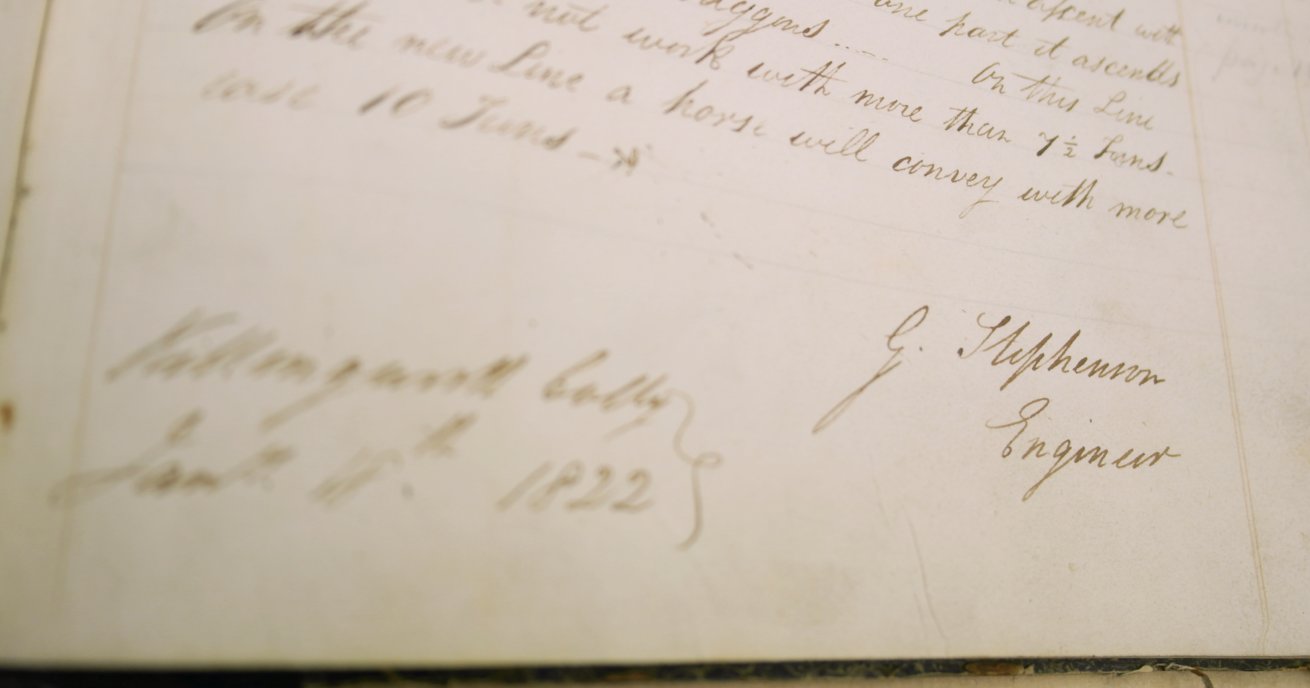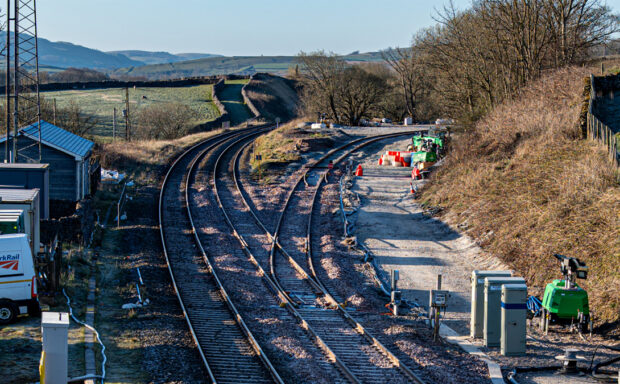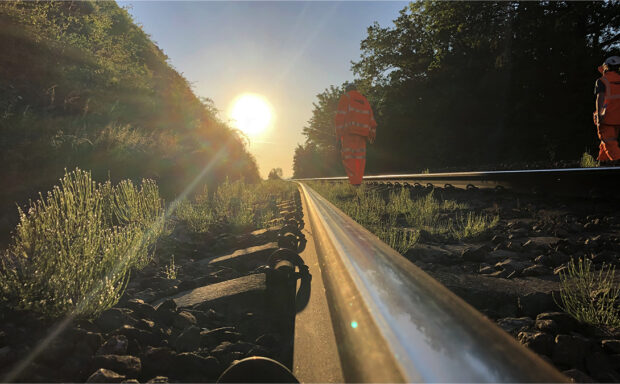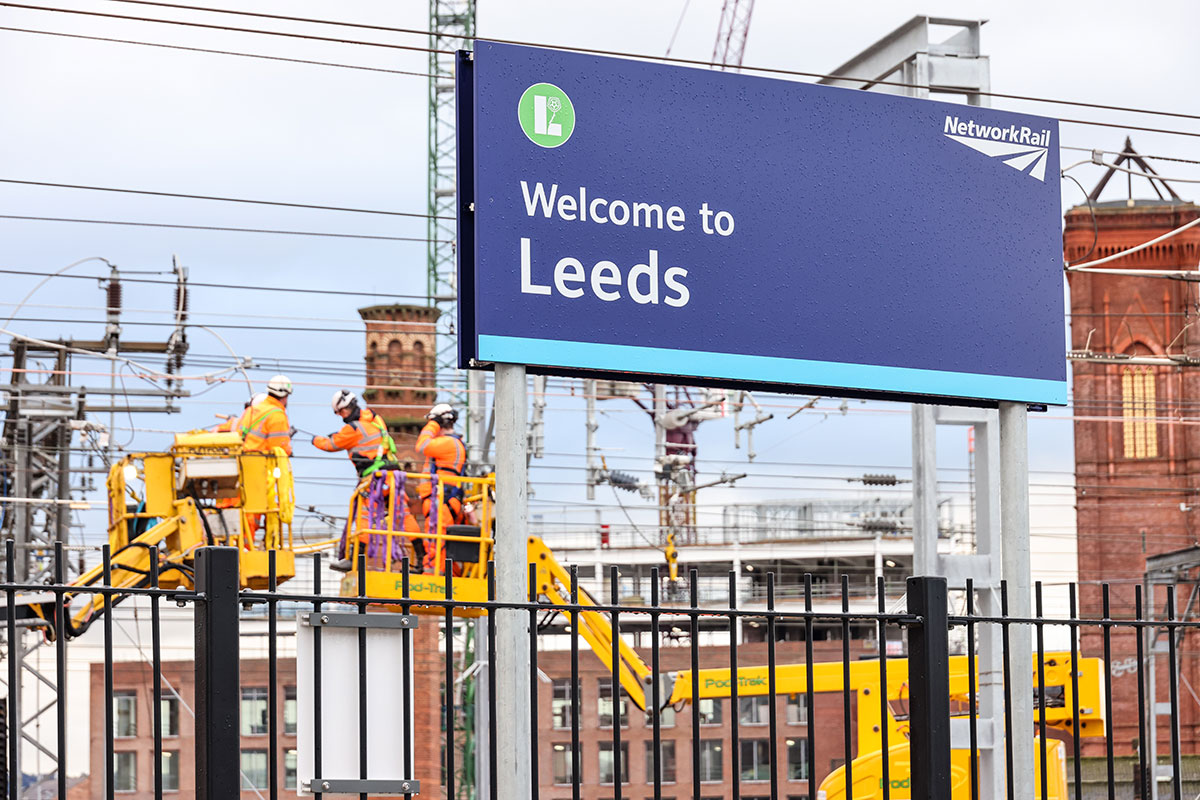One of the world’s most historically important railway artefacts has been rediscovered by Network Rail after more than 50 years.
For the first time, members of the public will be able to see detailed plans by George Stephenson – known as the father of the railways – for the world’s first passenger railway to use locomotives.
The notebook, dated 1822, was found by John Page, a records assistant at Network Rail’s archive in York. It outlines Stephenson’s redesign of and budget for the Stockton and Darlington Railway, and became the blueprint for the railways that followed.
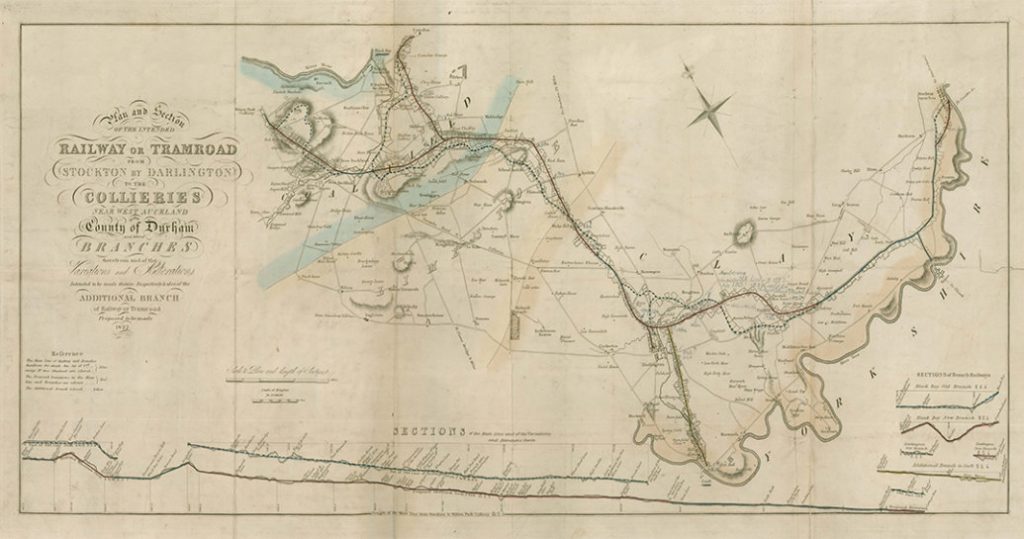
John uncovered the notebook, which had not been seen since the 1950s, while searching for documents in the archive’s deeds room in April. There are about 20,000 documents on the shelves; the Stephenson notebook is number 350.
He said: “Because it is a historical document it would never have been loaned out or requested as it didn’t impact the running of the railway so since the 1950s, it has sat on a shelf unnoticed amongst hundreds of other packets.
“I was looking for a deed for one of our internal colleagues and purely out of curiosity decided to look through the packets, and there it was, and what a thrill it was to find.”
Click on the gallery to see the front cover as it looks today and the first page
The rediscovery means the public will be able to see the notebook for the first time – the National Railway Museum in York unveiled a display of the notebook on 27 September, the 193rd anniversary of the opening of the Stockton and Darlington line.
The notebook shows Stephenson’s survey of fellow engineer George Overton’s original 1821 line and the amendments he recommended to it.
There were significant changes to the Overton design. Overton’s plan had sharp inclines, steep curves and tunnels whereas Stephenson favoured gradual inclines and eased curves. Stephenson also proposed the use of spoil excavated from the cuttings to create the embankments, avoiding the need for a tunnel Overton had recommended. This would shorten the Darlington branch by three miles.
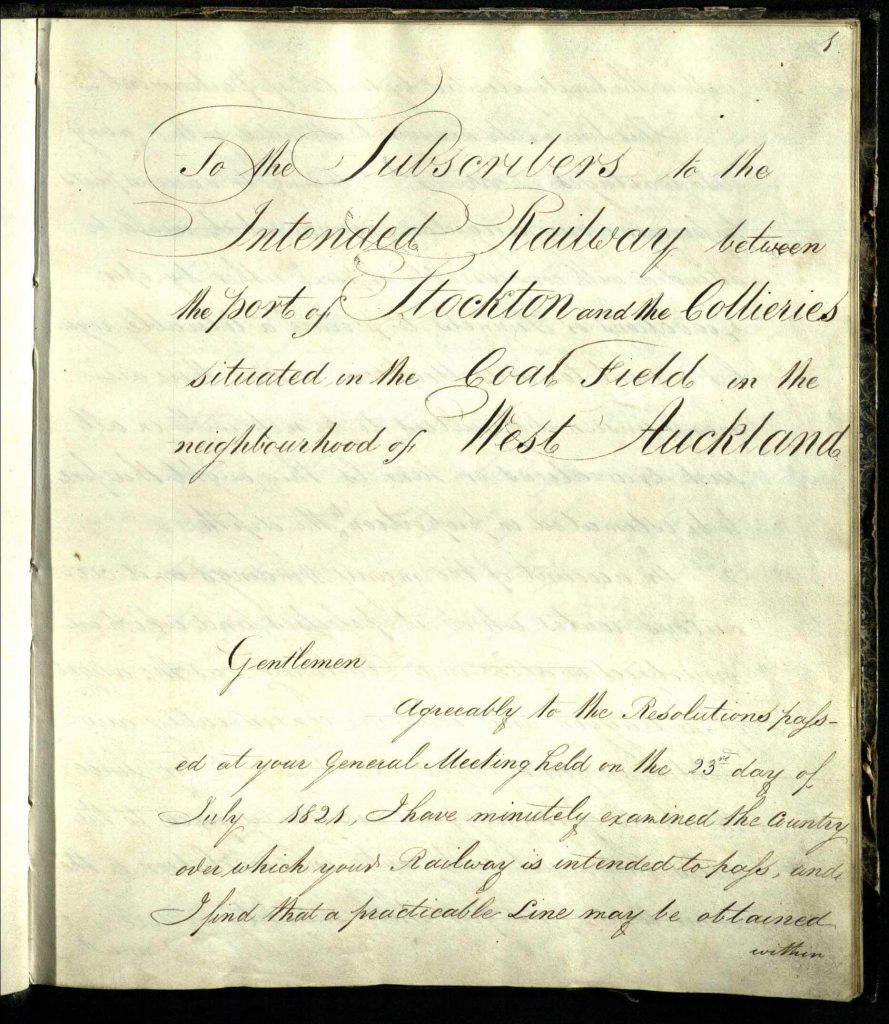
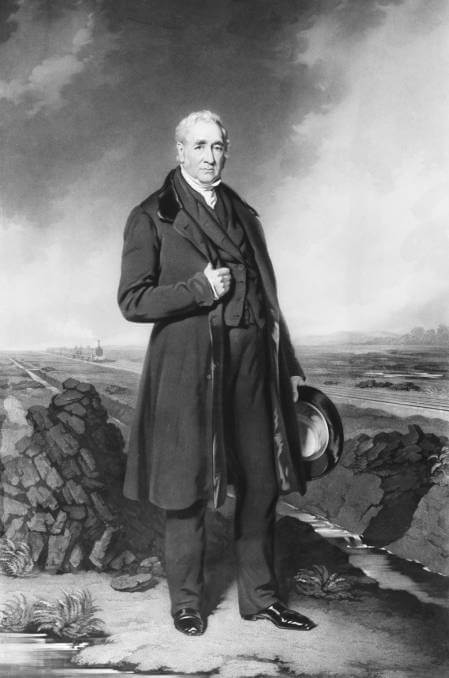
Overton’s plan relied heavily on horses and wagons upon the line’s completion, much like his colliery lines in South Wales. In South Wales, goods would be brought by canal part way and then transferred onto wagons, which were then hauled by horses on iron tramways.
Stephenson (pictured right) saw the advantage of using steam-powered locomotives and engines after a few successful trials on his colliery lines in Killingworth, in North Tyneside, so planned the Stockton and Darlington route to best suit their adoption.
In total, Stephenson’s estimate of the cost of his line was just over £60,000, down significantly from Overton’s more than £77,000.
The 12” x 12 notebook is bound in its original form and is written in ink with pencil annotations. It was signed by G Stephenson at Killingworth Colliery on 18 January 1822.
Stephenson was well known to struggle with written English – he was illiterate until the age of 18. John said: “It is said that he dictated pretty much all of his writing to a secretary. I think this is what happened in this case, it was dictated live, and then corrected in pencil, and then signed by Stephenson himself.”
He added: “In pencil you can see an editor has tried to ‘tidy-up’ his Northumbrian dialect.”
Click on the gallery to see pages outlining the revenue of the old and new lines, and the contrasting budgets
- Preserving railway history: five things saved by Network Rail
- Network Rail graduates step into history
- Step back in time… and inside Britain’s busiest signal box
- Incredible Stephenson railway history rediscovered
- Read the George Stephenson notebook online
- An overview of our history
- Working with railway heritage
